I’m not one to hype up products without reason, but let me tell you— the Schwinn 270 Recumbent Bike is a game-changer for anyone looking to bring low-impact cardio into their home.
Whether you’re recovering from an injury, easing into fitness, or just want a comfortable way to stay active, this bike delivers. It’s packed with features like 29 workout programs, Bluetooth connectivity, and a cushy seat that makes long rides feel like a breeze.
Trust me, if you’re after a reliable, budget-friendly cardio machine, the Schwinn 270 deserves a spot in your home gym.
My Journey With The Schwinn 270
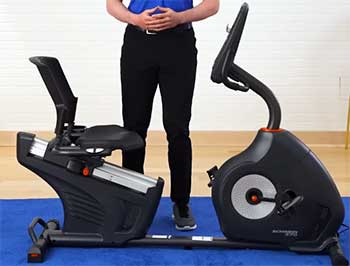
When I first decided to add a recumbent bike to my home gym, I was skeptical.
I’d always been a treadmill guy, pounding away at high speeds, but a nagging knee injury forced me to rethink my cardio game.
Enter the Schwinn 270 Recumbent Bike.
Unboxing it felt like Christmas morning— the packaging was sturdy, though I’ll warn you, it’s heavy.
I enlisted my brother to help lug it into my living room, and we opted for the in-home assembly for $129. Worth every penny, as the technician had it set up in under an hour.
The first time I sat on that padded, ventilated seat, I was sold. It’s like sinking into a recliner, but one that gets your heart pumping. My first ride was a 20-minute quick-start session, and I was surprised at how smooth and quiet the pedaling was, thanks to the 13-pound flywheel and eddy current resistance.
I played around with the 25 resistance levels, starting low to ease my knee into it, and found the transitions seamless. The DualTrack LCD screens were a nice touch, showing my speed, distance, and heart rate without overwhelming me with data.
I even plugged my phone into the USB port to charge it while streaming a podcast through the built-in speakers— talk about multitasking!
What struck me most was how joint-friendly it was. My knee didn’t complain once, and the backrest’s lumbar support kept me comfortable even during longer sessions. I tried the heart rate control program, setting a goal of 70% of my max heart rate, and the bike adjusted the resistance to keep me in that zone.
It felt like having a personal trainer. Over the weeks, I explored the 29 workout programs, from scenic virtual rides via the Explore the World app to interval sessions that left me sweaty but satisfied. This bike made me look forward to cardio— something I never thought I’d say.
The Pros of The Schwinn 270 Recumbent Bike
- Comfort That Feels Like a Hug
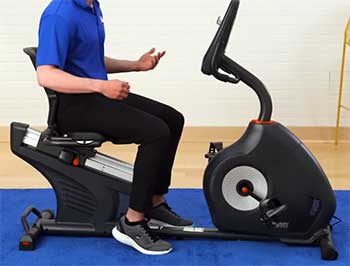
Let’s talk about the seat first because, honestly, it’s a standout.
The Schwinn 270’s seat is padded, contoured, and ventilated, with a backrest that offers lumbar support.
I’ve spent hours on this bike without feeling like I’m sitting on a rock, which is more than I can say for some spin bikes I’ve tried.
The walk-through design makes it easy to hop on and off, especially if you’ve got mobility issues or are recovering from an injury. It’s like the bike was designed to say, “Come on, you’ve got this, and I’m here to make it comfy.”
- Workout Variety to Keep You Hooked
With 29 built-in workout programs, boredom isn’t an option. You’ve got everything from quick-start sessions for days when you just want to pedal and chill to heart rate control programs that push you to stay in your target zone.
I loved the profile workouts, which mix up resistance to mimic hills or sprints. The Explore the World app adds a fun twist, letting you pedal through virtual routes like the French Riviera. It’s not just a workout; it’s an adventure.
Plus, with four user profiles, everyone in your household can save their settings, making it a family-friendly choice.
- Tech That’s Simple Yet Effective
The Schwinn 270 doesn’t try to dazzle you with a fancy touchscreen, but its DualTrack LCD screens get the job done. They’re clear, backlit, and show metrics like time, distance, calories, and heart rate. Bluetooth connectivity lets you sync with apps like MyFitnessPal or Apple Health, so you can track your progress over time.
I found the USB port super handy for keeping my phone charged, and the built-in speakers are surprisingly decent for playing music or podcasts. The three-speed fan? A lifesaver during intense sessions. It’s tech that supports your workout without overwhelming you.
- Quiet and Sturdy for Any Space
At 86.6 pounds, this bike is light enough to move with its transport wheels but sturdy enough to handle users up to 300 pounds. The carbon steel frame feels solid, and the bike stays steady even when I’m pushing hard on the pedals.
The belt-drive system and magnetic resistance make it whisper-quiet, so I can ride while my partner’s napping or the kids are watching TV. If you live in an apartment or have a small home gym, this bike’s compact footprint (64 inches long) won’t eat up your space.
- Budget-Friendly Without Skimping
For around $649, the Schwinn 270 offers a lot of bang for your buck. You’re getting a durable frame with a 10-year warranty, 25 resistance levels, and a suite of features that rival pricier bikes.
There’s no subscription required, unlike some competitors, which means you’re not locked into ongoing costs. I’ve found it to be a solid investment for anyone who wants a reliable, low-impact cardio machine without breaking the bank.
The Cons of The Schwinn 270 Recumbent Bike
- A Lightweight Flywheel Limits Intensity
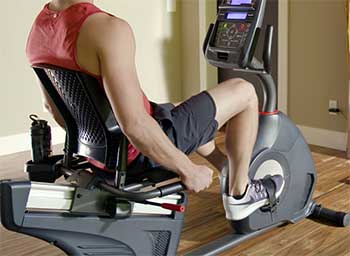
The 13-pound flywheel is one area where the Schwinn 270 falls short.
While it’s smooth and quiet, it doesn’t offer the intense resistance you’d get from a heavier flywheel, like those on high-end spin bikes.
If you’re a hardcore cyclist training for a race, you might find it lacking.
For me, it’s fine for general fitness and rehab, but I occasionally wished for more resistance to really push my limits.
- Grip Heart Rate Monitors Aren’t Always Reliable
The handlebar grip heart rate monitors are convenient, but they’re not the most accurate. I had to hold them for 15 seconds to get a reading, and even then, the numbers sometimes seemed off.
A chest strap (not included) works better, but it’s an extra expense. If heart rate tracking is a big deal for you, budget for a compatible Polar strap to get the most out of the bike’s heart rate programs.
- Short Labor Warranty Raises Concerns
The warranty is a mixed bag. The 10-year frame coverage and two-year parts warranty are solid, but the 90-day labor warranty feels stingy. If something goes wrong after three months, you’re on your own for repair costs.
I haven’t had issues yet, but knowing that labor coverage is so brief makes me a bit nervous about long-term maintenance.
- Not Ideal for Very Tall or Short Riders
The adjustable seat is great, but it has limits. If you’re under 5’2” or over 6’0”, you might struggle to find a comfortable position. I’m 5’10”, and it fits me perfectly, but my shorter friend found the pedals a bit far, and my taller cousin complained about knocking his knees.
It’s a minor gripe, but worth noting if you’re outside the average height range.
- Software Glitches Can Be Frustrating
I’ve read some user reviews mentioning software issues, like the console failing to change resistance or the screen going blank. I haven’t experienced this myself, but it’s concerning, especially with only a one-year electronics warranty.
The basic LCD screens also lack the pizzazz of modern touchscreens, which might disappoint tech-savvy users looking for a more immersive experience.
Maintenance Tips For Keeping Your Schwinn 270 In Top Shape
- Regular Cleaning Keeps It Fresh
Your Schwinn 270 is going to see some sweat, so cleaning it regularly is a must. I wipe down the seat, handlebars, and console with a damp cloth and mild soap after every session. Avoid harsh chemicals— they can damage the finish.
For the pedals and frame, a quick vacuum or brush to remove dust keeps things looking new. If you’re like me and occasionally spill water from the bottle holder, dry it immediately to prevent rust or electrical issues.
- Check and Tighten Bolts Monthly
The bike’s sturdy, but vibrations from regular use can loosen bolts over time. I make it a habit to check the frame, seat, and pedal bolts once a month with the included Allen wrenches.
It takes 10 minutes and prevents wobbling or creaking. Pay special attention to the seat rail— if it’s loose, adjusting the seat becomes a hassle. A quick tighten ensures everything stays secure.
- Lubricate the Moving Parts
To keep the pedaling smooth, I lubricate the chain and flywheel every three months with a silicone-based lubricant. Don’t overdo it— a little goes a long way. I also check the pedals for wear and tear, as some users report them loosening over time.
If you notice any grinding or resistance, a quick lube job usually does the trick. Always wipe off excess to avoid attracting dust.
- Protect the Electronics
The console and heart rate grips are sensitive to moisture, so I keep a towel handy to dry my hands before touching them. If you’re using the USB port or MP3 input, make sure your devices are clean to avoid gunking up the ports.
I also unplug the bike when it’s not in use to protect the electronics from power surges. It’s a small step that could save you from costly repairs.
- Store It Smartly
Even though the Schwinn 270 has transport wheels, I recommend finding a dedicated spot for it. I keep mine on a rubber mat to protect my floor and reduce vibrations. If you need to move it, tilt it gently onto the wheels and avoid dragging it across rough surfaces.
Store it away from direct sunlight or damp areas to prevent damage to the frame or electronics. A little care goes a long way in extending its life.
Comparing The Schwinn 270 To Other Brands
- Schwinn 270 Vs. NordicTrack Commercial R35
When I hopped on the NordicTrack Commercial R35, priced around $1,500, I immediately noticed its tech-heavy approach. Its 14-inch touchscreen dwarfs the Schwinn 270’s DualTrack LCD screens, offering immersive iFit workouts with live coaching and virtual rides through places like the Alps.
The R35’s 26 resistance levels felt slightly smoother, likely due to a heavier flywheel, which gave me a more intense workout when I cranked it up. However, the NordicTrack requires an iFit subscription, adding ongoing costs that the Schwinn avoids.
The Schwinn’s ventilated seat was more comfortable for my back during long sessions, while the R35’s seat, though cushy, lacked that extra airflow. The NordicTrack’s bulkier frame also took up more space than the Schwinn’s compact 64-inch footprint.
If you’re after high-tech immersion and don’t mind the price, the R35 is tempting, but the Schwinn 270’s value and simplicity make it a better fit for budget-conscious users like me.
- Schwinn 270 Vs. ProForm 325 CSX
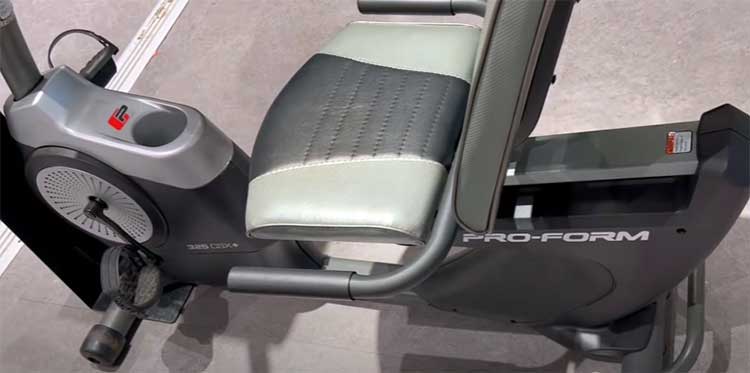
The ProForm 325 CSX, retailing around $600, is the closest in price to the Schwinn 270, making it a direct competitor. Its 22 resistance levels are a tad fewer than the Schwinn’s 25, but the flywheel felt comparable, delivering a smooth ride for casual workouts.
The ProForm’s 7-inch touchscreen with iFit integration is flashier than the Schwinn’s LCDs, but again, you’re tied to a subscription for full functionality. I found the Schwinn’s seat more comfortable, with better lumbar support, while the ProForm’s seat felt a bit firmer.
The 325 CSX is slightly lighter at 80 pounds, making it easier to move, but it doesn’t feel as sturdy as the Schwinn’s 300-pound capacity frame. The ProForm’s warranty (five years on the frame, one year on parts) is less generous than the Schwinn’s 10-year frame coverage. For a similar price, the Schwinn 270’s extra programs and no-subscription model give it the edge for me.
- Schwinn 270 Vs. Sole LCR
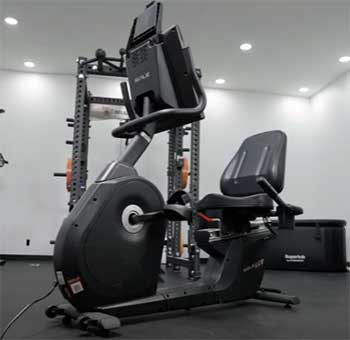
The Sole LCR, priced around $1,300, feels like a tank with its 30-pound flywheel, which delivered a noticeably smoother and more challenging ride than the Schwinn 270’s 13-pound flywheel.
I could push harder on the Sole during intense sessions, making it ideal for serious fitness buffs.
Its larger LCD screen is clear but lacks the Schwinn’s Bluetooth app connectivity, which I missed for tracking progress.
The Sole’s seat adjusts in more directions, letting me fine-tune my position, but it’s less padded than the Schwinn’s, which I found comfier for long rides.
The LCR’s 350-pound weight capacity and lifetime frame warranty outshine the Schwinn’s 300-pound limit and 10-year warranty, but the Sole is heavier and harder to move. If durability and intensity are your priorities, the Sole LCR is worth the splurge, but the Schwinn 270’s features and lower price make it more accessible for most home gyms.
Frequently Asked Questions (FAQ)
You bet it is! The Schwinn 270 is a fantastic choice for low-impact cardio, especially if you’re dealing with joint issues or just want a comfortable workout. Its 29 workout programs, Bluetooth connectivity, and cushy seat make it versatile and user-friendly. While it’s not perfect— the flywheel could be heavier, and the heart rate grips are iffy— it’s a stellar value at around $649. I’ve found it reliable and fun, especially for casual fitness or rehab.
The Schwinn 270, specifically the MY17 model (number 100515), hit the market in 2017, updating an earlier 2013 version. It’s been a staple in Schwinn’s lineup, though it’s no longer in production. The 2017 refresh added Bluetooth and a better console, keeping it relevant for home gyms even today.
The Schwinn 270 edges out the 230 for most users. It has 29 workout programs compared to the 230’s 22, plus a more comfortable, ventilated seat. The 270 also supports four user profiles versus the 230’s two, making it better for families. Both have 25 resistance levels, but the 270’s DualTrack LCDs feel more polished. The 230 is slightly cheaper, but I’d say the 270’s extra features are worth the $100-$150 price bump unless you’re on a tight budget.
Yes, the Schwinn 270 needs to be plugged into a standard 110V-120V outlet to power its console, fan, and speakers. It comes with an AC adapter, so you don’t need batteries. I keep mine near an outlet in my living room, and the cord’s long enough to give you some placement flexibility. Just make sure you’ve got a power source nearby.
Why The Schwinn 270 Is Your Next Fitness Move?
I’ve spent enough time on the Schwinn 270 to know it’s a solid pick for anyone wanting a low-impact, budget-friendly cardio solution. Its comfy seat, variety of workouts, and quiet operation make it a joy to use, whether you’re rehabbing an injury or just staying active.
Sure, it’s not perfect— a heavier flywheel and better heart rate monitors would be nice— but for the price, it’s hard to beat. If you’re ready to make fitness fun and easy, the Schwinn 270 is calling your name.
